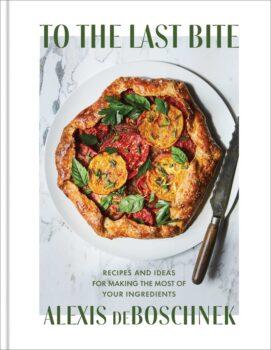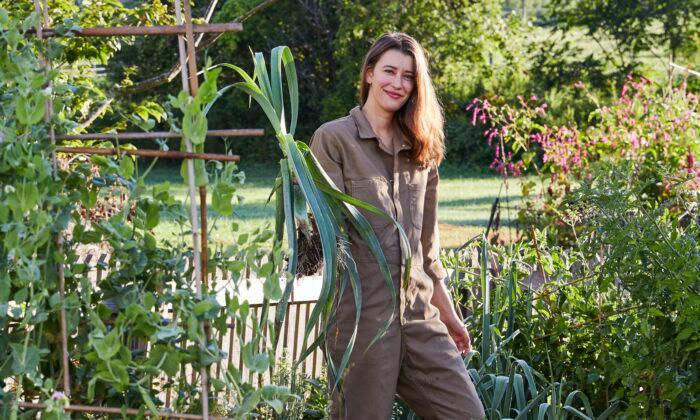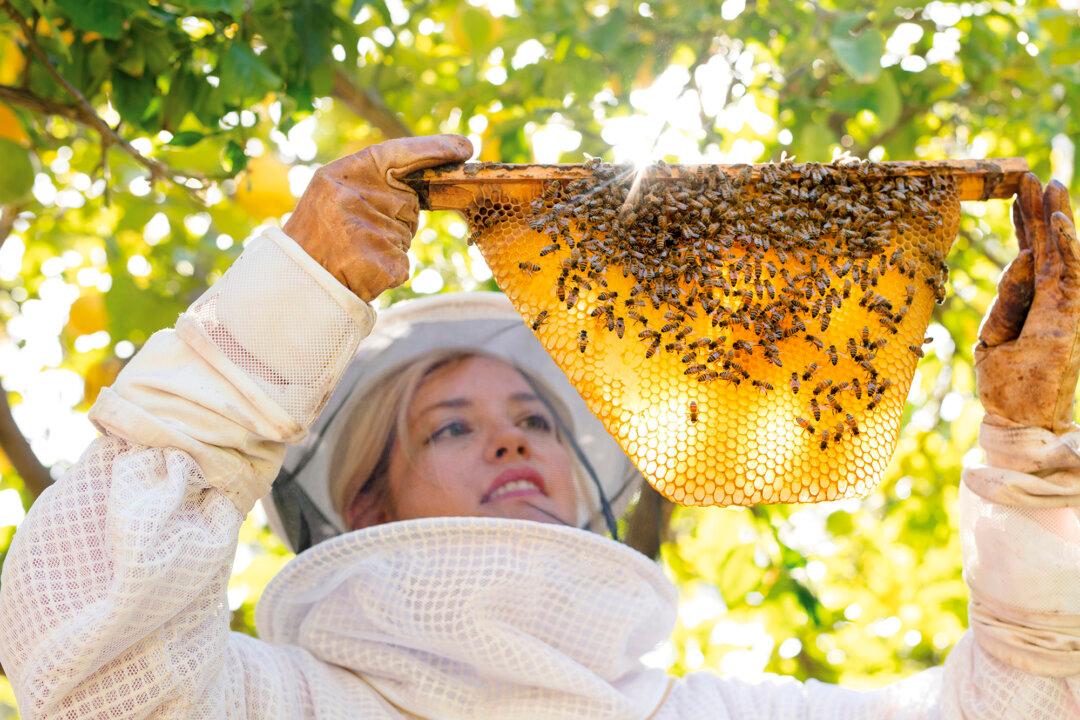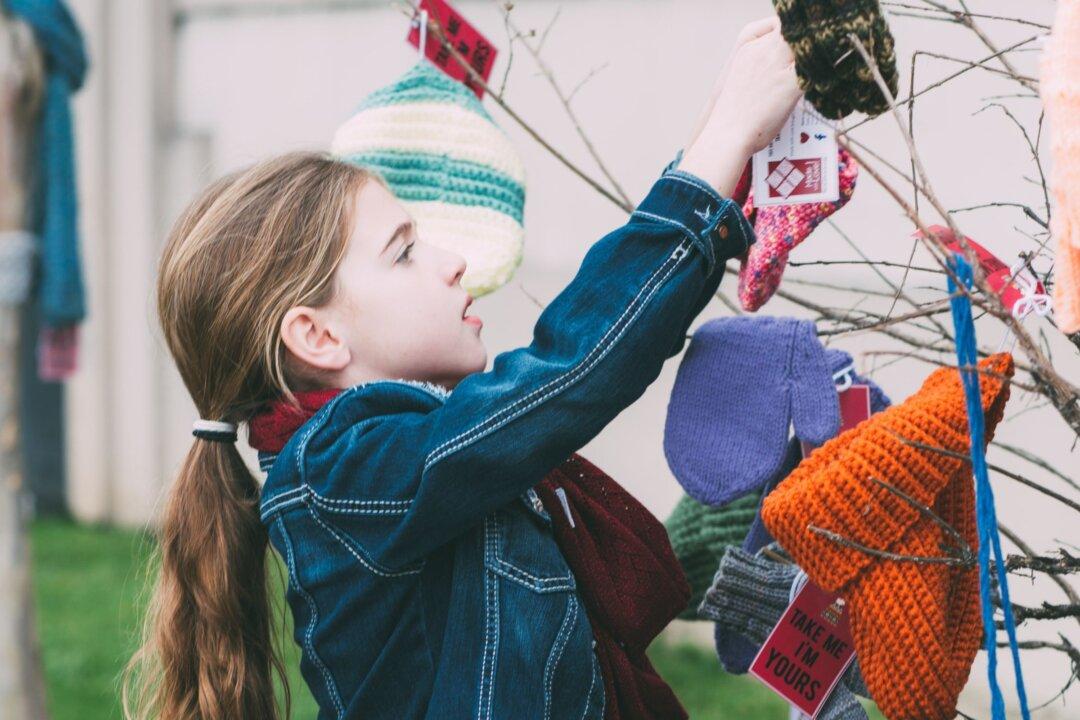That half-bunch of kale is wilting in the fridge. There’s a lone carrot at the back of the crisper. And those apples have lost their crunch. Can anything be done to save them from the trash?
Alexis deBoschnek says yes! That kale? It’s perfect, she would enthuse, for a massaged kale salad with lemon juice and parmesan, one of her personal favorites.
The lone carrot? She might quickly pickle it with radishes in brine and store it in the fridge, no canning required. They’ll add piquant crunch to sandwiches, salads, grain bowls, and even fried eggs.
And as for those sad apples, she has a recipe for a brown butter apple cake that would transform the most dismal fruits into something delightful. When cooked, it won’t matter whether the apples are crunchy. The goal for deBoschnek is to make the most of every ingredient and reduce kitchen waste as much as possible.
“‘Sustainability’ is the word of the decade, but no one really knows how to do it,” deBoschnek said.
Much of what was once common wisdom for earlier generations has been lost because of changing modern lifestyles, despite renewed interest in sustainability. DeBoschnek set out to help change that with her debut cookbook, “To the Last Bite,” in which she deliberately sets out a simple road map for conscious and efficient use of ingredients.
“If we’re going to really encourage people to be more conscious and use stuff up, I need to make it doable,” she said.
The ethos is timely, but it’s deBoschnek’s vast enthusiasm, humor, and adventurousness that really make her approach to cooking shine. For her, it’s something that comes naturally.
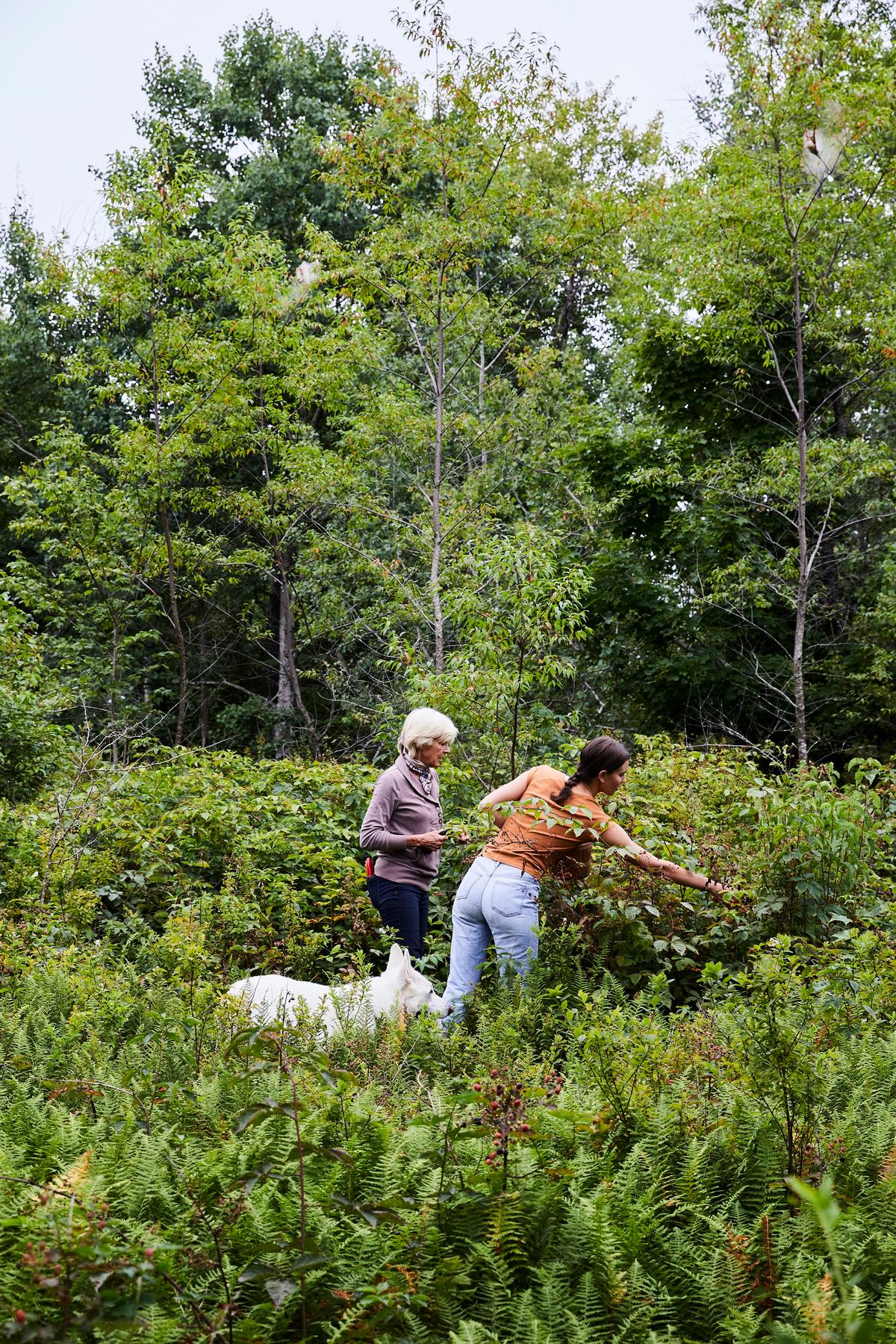
Rooted in the Garden
DeBoschnek grew up in the Catskill Mountains in New York, following her master-gardener mother around a sumptuous garden.“We had flowers and vegetables,” she said, “and it’s magical to go into your garden and eat what you grew.”
DeBoschnek described how the house was always full of plant life: “It’s full of arrangements that my mom makes.”
She dedicated her book to her mom—“my inspiration.” Her mother came to the United States from the Netherlands in her 20s. Living in New York, she started to volunteer for the prestigious Wave Hill botanical garden and “was so naturally good at gardening that they hired her.” After moving to the Catskills, she had her own gardening business for many years.
“She’s annoyingly good at everything she does,” deBoschnek said, laughing. “She can grow anything; it’s almost maddening.”
Her family didn’t choose the Catskills; the Catskills chose them. They lived in Williamsburg, Brooklyn, when deBoschnek was little, and during the blasting of the Williamsburg Bridge, she got lead poisoning. She had an uncle living in the Catskills, “and my family basically fled.”
“The plan wasn’t to stay there,” she said. “The plan was to get out of the city and then make a plan.”
But the Catskills called to them, so they stayed.
“As a child in the Catskills, it was amazing,” deBoschnek said. “I spent most of my time outside. It’s a real agricultural region, farm after farm after farm. The soil isn’t great; it’s rocky and acidic. You need to know how to nurture it to get things to survive.”
DeBoschnek describes the climate of the Catskills as “intense. Winters are long, and it can snow in May. You really have to make the most of the growing season here and learn how to extend it with canning, preserving, and saving your scraps.”
“Gardening was just part of my life,” deBoschnek said. “It wasn’t something that I felt really conscious of. I just kind of absorbed it.”
DeBoschnek went to college and culinary school, then entered food media, becoming a recipe developer and video host of BuzzFeed Tasty’s viral “Chef out of Water” series. She spent seven years in New York and seven years in Los Angeles. In October 2020, she and her fiancé moved back to her mom’s house, thinking it would be temporary. They love the Catskills so much that they plan to stay.
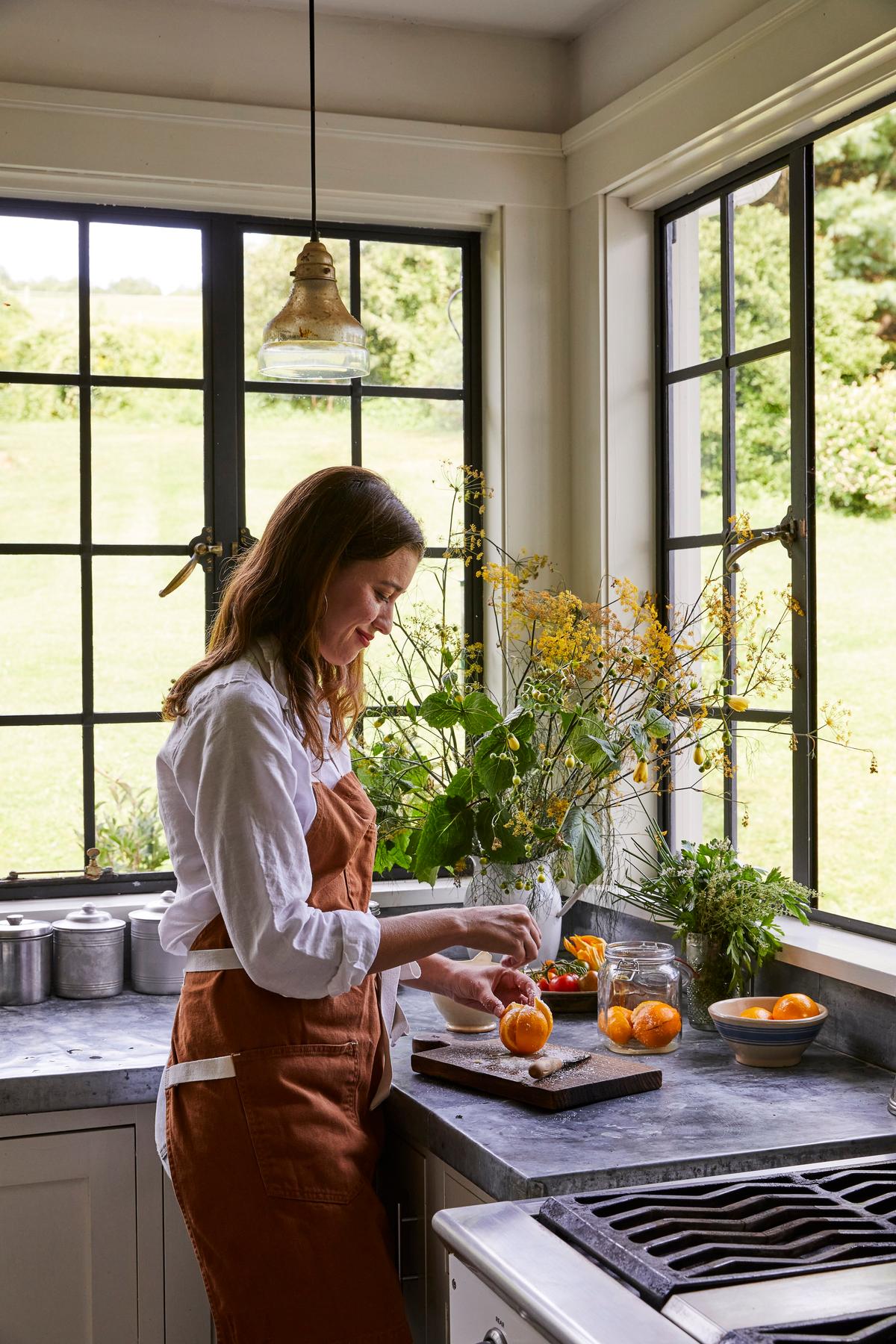
Inspiring Home Cooks in the Kitchen
Growing up in the Catskills and then living in big cities and working in food media gave deBoschnek what she calls a “unique position” for her cookbook.”“The whole idea of the book is to encourage people to think more consciously and efficiently in the kitchen while cutting down on food waste in ways that are actually exciting and inspiring,” she said.
The book offers a range of recipes and tips for using up the leftover ingredients that inevitably accumulate in fridges and crisper drawers, with a focus on especially susceptible dairy products, herbs, and vegetables. The recipes are linked like a “choose your own adventure” book: If one recipe calls for a cup of diced zucchini, for instance, a footnote will helpfully lead you to another recipe, page number provided, for using whatever zucchini is left. This interconnected system offers a creative and fun way to think about maximizing every ingredient, using up those odds and ends in the kitchen.
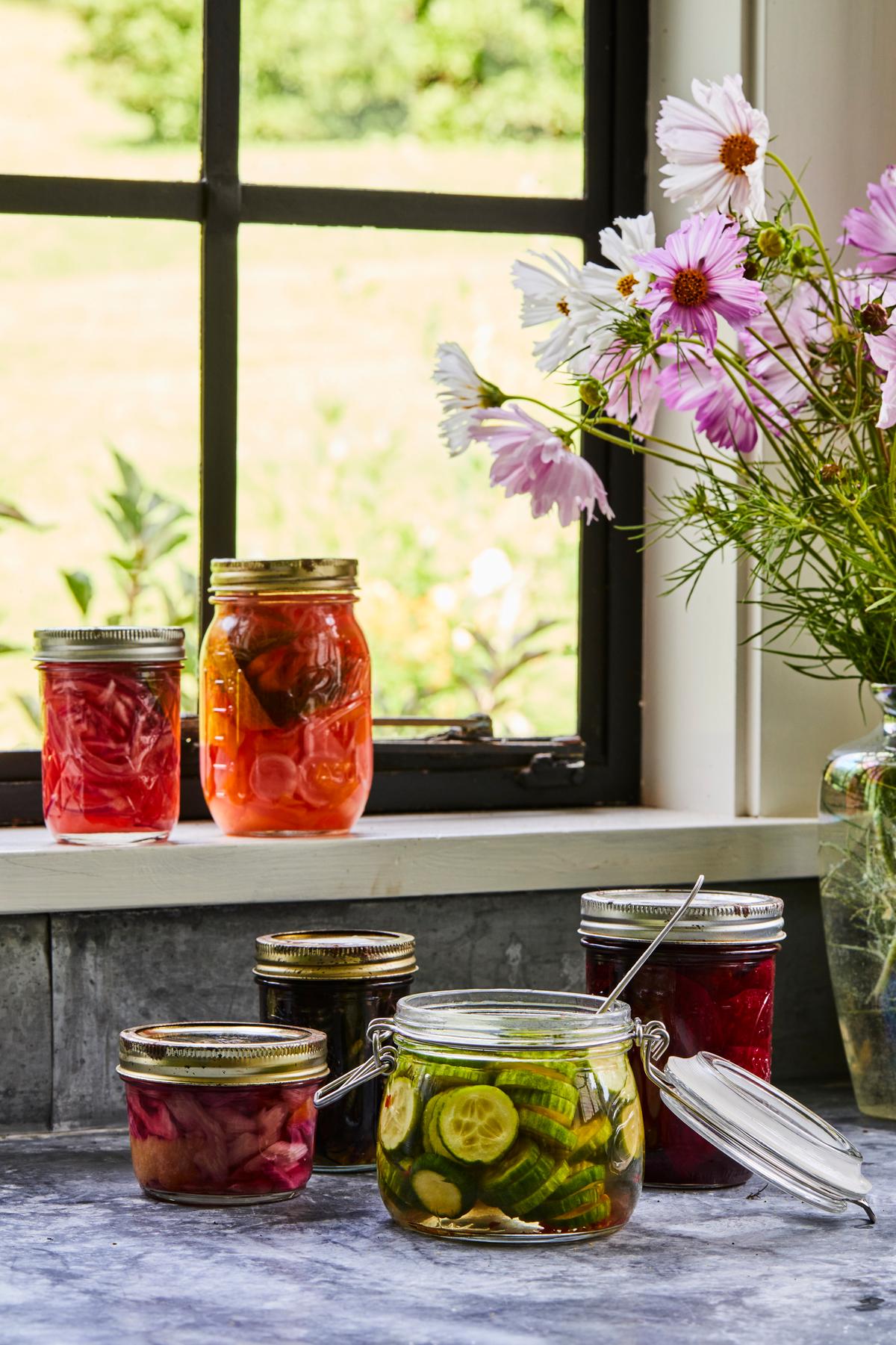
DeBoschnek also provides simple instructions to help cooks learn to salvage the bits and pieces that would normally get unthinkingly tossed. Carrot tops can be blitzed into pesto; corn cobs saved and simmered into a flavorful stock for soups. Radish greens, kept intact and roasted with their roots, become as crisp and addictive as chips. And did you know that you can regrow scallions and even lettuce leaves by putting the trimmed ends in water?
A section of the book forays into the idea of the Victory Garden, arising from World War II, when people grew vegetables in window boxes to help with food shortages.
“I hadn’t planned on including it, but it was a product of early pandemic days,” deBoschnek said, noting that the COVID-19 pandemic made her book even more timely. “People needed to feel grounded and reconnected to what’s really important.”
She said she hoped to show people who can’t have a garden that “you can still grow something on your windowsill.” Her aim in the book was to “make people feel taken care of: I’m going to show you; I’m going to make this so easy for you.”
DeBoschnek’s approach to gardening, cooking, and eating is to experiment, learn, enjoy, and creatively use what’s in season and on hand. She knows the effort and time it takes to grow something, and part of respecting the ingredients is making sure to use every bit of them she can and to enjoy them fully—to the last bite.
